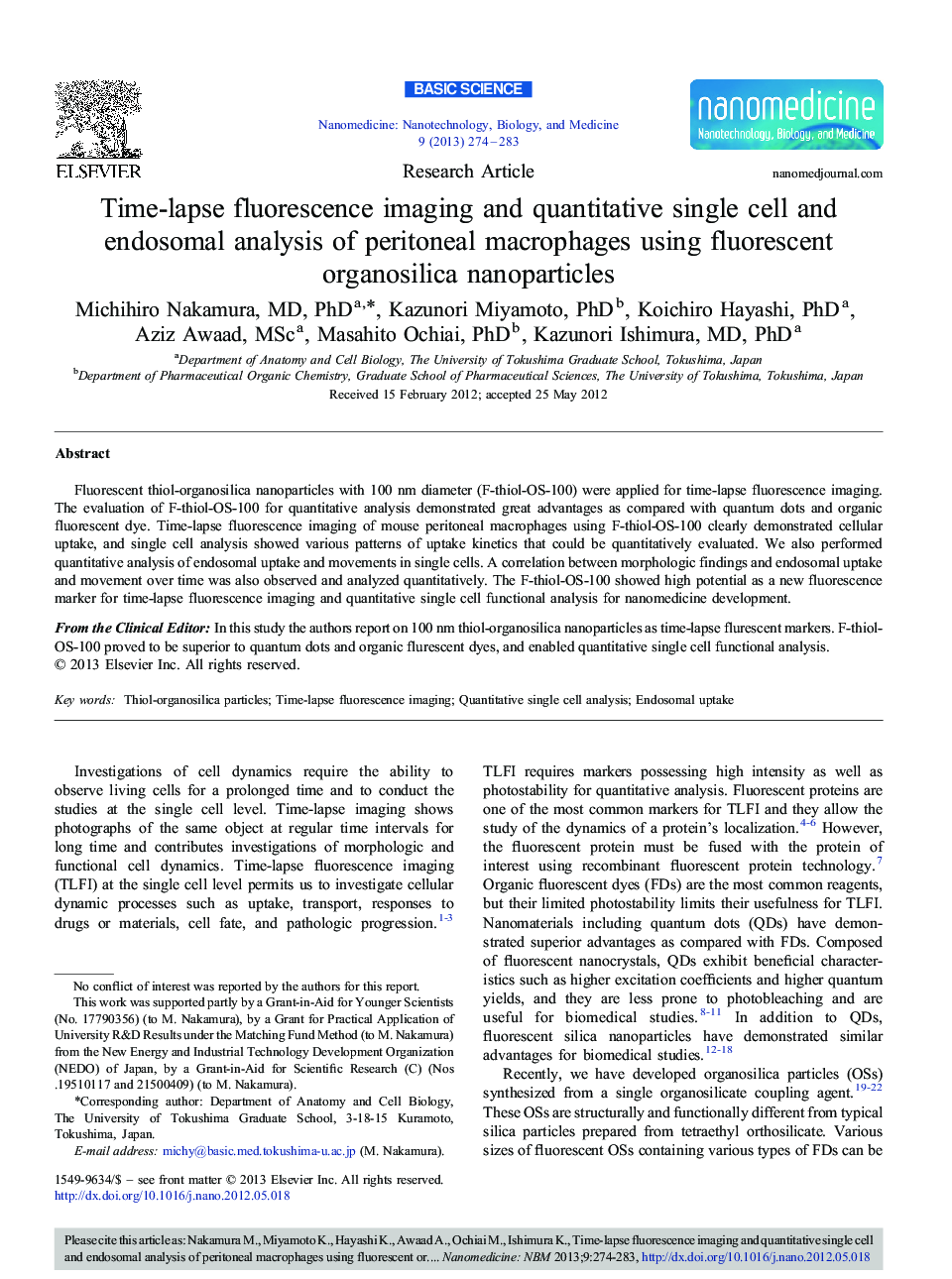| کد مقاله | کد نشریه | سال انتشار | مقاله انگلیسی | نسخه تمام متن |
|---|---|---|---|---|
| 877719 | 911042 | 2013 | 10 صفحه PDF | دانلود رایگان |

Fluorescent thiol-organosilica nanoparticles with 100 nm diameter (F-thiol-OS-100) were applied for time-lapse fluorescence imaging. The evaluation of F-thiol-OS-100 for quantitative analysis demonstrated great advantages as compared with quantum dots and organic fluorescent dye. Time-lapse fluorescence imaging of mouse peritoneal macrophages using F-thiol-OS-100 clearly demonstrated cellular uptake, and single cell analysis showed various patterns of uptake kinetics that could be quantitatively evaluated. We also performed quantitative analysis of endosomal uptake and movements in single cells. A correlation between morphologic findings and endosomal uptake and movement over time was also observed and analyzed quantitatively. The F-thiol-OS-100 showed high potential as a new fluorescence marker for time-lapse fluorescence imaging and quantitative single cell functional analysis for nanomedicine development.From the Clinical EditorIn this study the authors report on 100 nm thiol-organosilica nanoparticles as time-lapse flurescent markers. F-thiol-OS-100 proved to be superior to quantum dots and organic flurescent dyes, and enabled quantitative single cell functional analysis.
Graphical AbstractFluorescent thiol-organosilica nanoparticles enable quantitative time-lapse fluorescence imaging and single cell functional analysis for nanomedicine development.Figure optionsDownload high-quality image (164 K)Download as PowerPoint slide
Journal: Nanomedicine: Nanotechnology, Biology and Medicine - Volume 9, Issue 2, February 2013, Pages 274–283